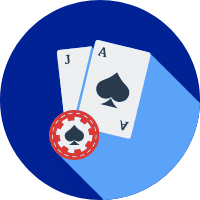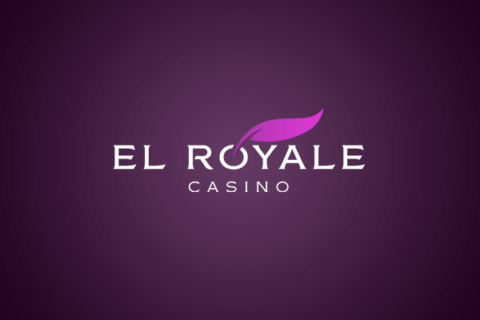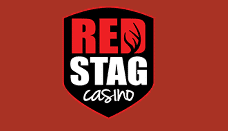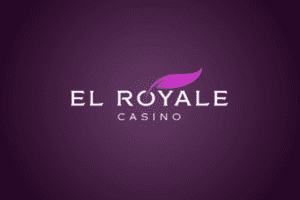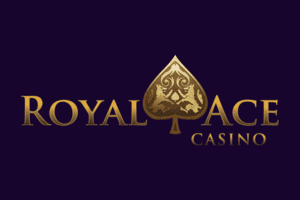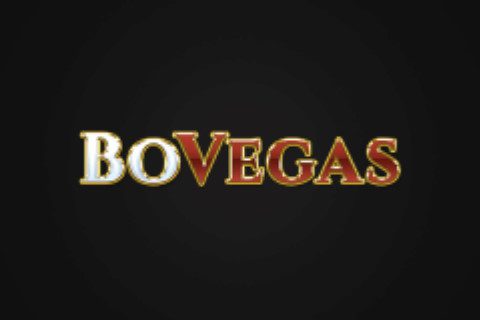How to Play Blackjack: Your Ultimate Guide for 2023
Despite what it may look like, blackjack is a super easy game to learn — by the time you finish reading this page, we’re confident you’ll be able to play blackjack like a pro!
So, what are you waiting for?
Play Top Online Blackjack Now / The Best Online Blackjack Sites
How to Play Blackjack, in 4 Easy Steps
Yes, when it comes to blackjack strategy, there are loads of rules to learn. But for now, here’s your basic guide of how to play blackjack:
- Your goal in blackjack is to beat the dealer’s hand without going over 21.
- You’ll receive 2 cards at the beginning of each round, and you’ll add up the values of these cards.
- Cards 2-10 have face value; King, Queen, Jack are worth 10; and Aces are either a 1 or an 11 — it’s up to you to decide.
- The dealer also draws two cards. The aim of the game is to beat his hand (have a higher hand) without going over 21.
- If you would like the dealer to deal you another card, you tell him “hit”
- If you do not want to be dealt another card, you “stand”
- “Busting” is when the sum of your hand is over 21.
- The winner of the round is whoever has the highest hand without going bust.
Blackjack Rules
Under normal circumstances, the house has a very thin advantage. With the right blackjack strategy and bonuses in place, that advantage flips to the player’s side. You don’t even need to count cards to make this work–. Find the right table, get the right offers in place, and win real money playing blackjack online!
The proven formula of blackjack basics is simple: practice and repetition. All card counting systems and blackjack strategy charts in the world can’t help you when you run out of time. And advanced card counting strategies rely on a running count, so if you lose count, you’ll have to wait until all the decks in the shoe have been dealt.
Blackjack Card Values
You need to know the card values to know how to play 21. Cards 2-10 are worth the value of the number on the face of the card. Numbered cards are worth the corresponding number indicated on the card. Face cards (those with pictures on them) are worth 10, except for the Ace, which is worth 1 or 11. A picture combined with an Ace is Blackjack (a value of 21).
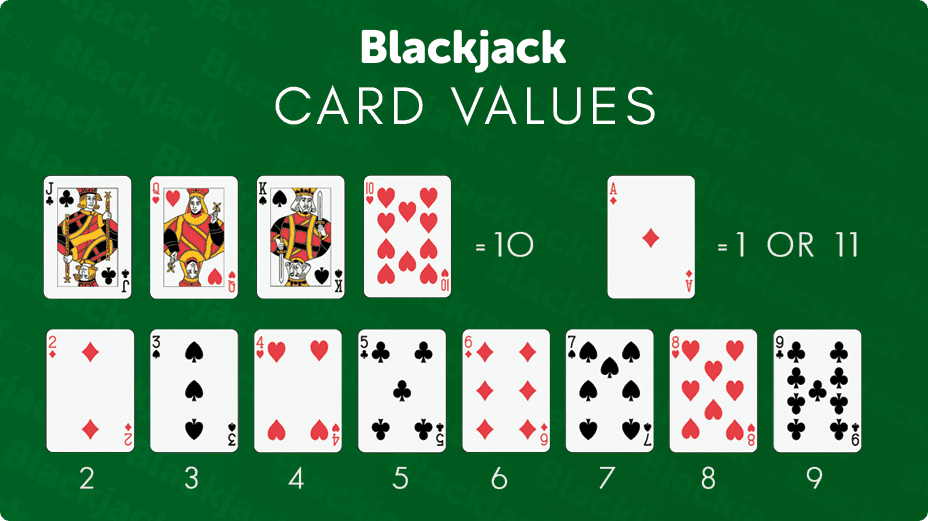
21 Card Game Explained
The most important blackjack rule is simple: beat the dealer’s hand without going over 21. If you get 21 points exactly on the deal, that is called a “blackjack.” When you’re dealt a blackjack 21, it’s customary to pay out 3:2 or 2:1. That means you win $300 for every $200 bet at 3:2, or $200 for every $100 bet at 2:1. Clearly. 2:1 is a better payout. Some casinos have moved this down to 6:5 or 7:5, however, this means you’ll get considerably less money over the long haul. A game that pays 1:1 on any kind of blackjack is usually not even worth looking at. Whether you’re at a land-based casino or playing online blackjack, the gambling table is always laid out the same way.
When you learn how to play 21, you will find each player has his or her own assigned betting area, laid out on the table for each seat position. The playing area includes a space for his/her cards, a betting area, and possibly an insurance field or location for a double-down bet. The dealer, likewise, has a designated area for his or her cards, plus a “shoe” containing at least one deck of cards. A shoe is a box that might include an automated shuffler to randomly distribute a card each time the dealer removes one for the deal.
Traditional land-based casinos, as well as online blackjack casinos, will use between one and as many as eight decks per game. This helps to thwart those who might be counting cards or are considered “advantage” players who know how to manipulate blackjack rules. While counting cards is legal, a casino will ban anyone it considers to be a highly skilled player capable of imposing an advantage over the house in one or more casino games.
Counting cards essentially is the act of tracking the number of high and low-value cards used to better predict a more likely outcome on a particular hand. Now that you know the basic tools of the game, it’s time to examine how to play. The blackjack rules assign numerical blackjack card values to every card.
Blackjack Basic Table Rules
When you play the house, you play against the casino, which is represented by the dealer. The dealer deals one card face up to each player, from left to right, with the last card going to the house’s hand, which is face down. The dealer will then deal one card facing up to each player and then the house.
After the initial deal, the blackjack rules indicate that the dealer will ask each player, in succession, if he/she needs one or more cards. As the player, you can ask for one or more cards(called a “hit”)until you either go over 21 (“bust”), or you think you have the best possible hand.
Once you have all the cards you need, you “stay” or “stand”; meaning you signal to the dealer that you don’t want any more cards. Each subsequent player then decides whether to hit or stand.
After all the players have completed their hands or gone bust, the dealer reveals his or her down card. Depending on the cards in the dealer’s hand, the blackjack rules at the table will dictate whether the dealer will hit or stand.
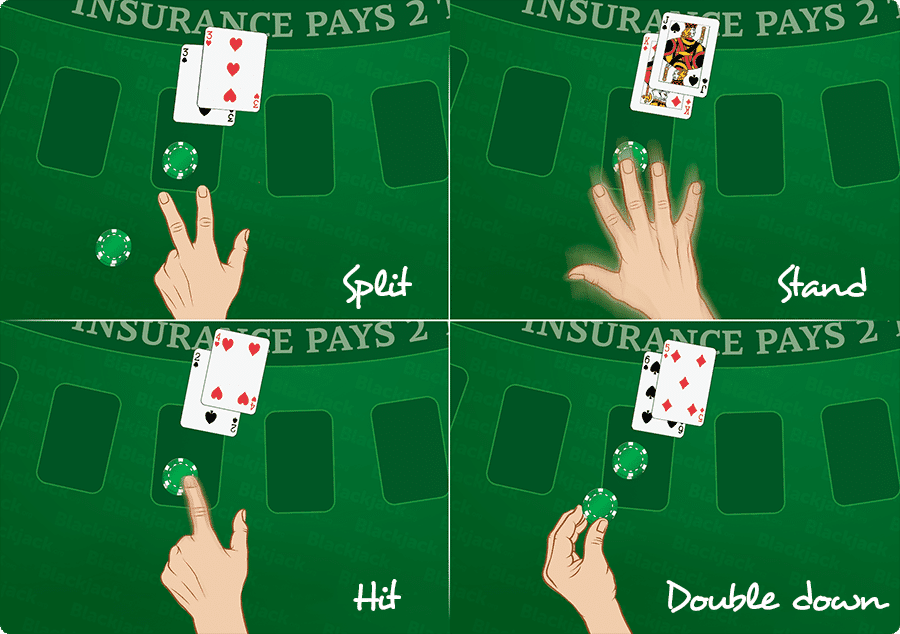
Once the dealer’s final hand is established, all players who did not go bust compare their scores to the dealer’s hand. Those who beat the dealer win, while the rest lose—unless they tied, which is called a “push.”
A push is considered “no action,” and refunds the player’s bet. Some casinos, though, might declare a push to be either a loss or a win for the player. The casino’s 21 rules should say exactly how they handle such ties with players.
Blackjack Rules for Dealers
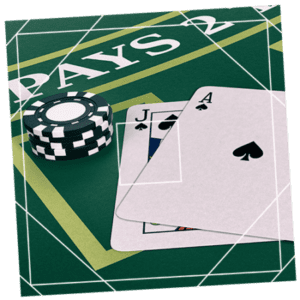 To understand how to beat the house, you need to know how the dealer is affected by the casino’s 21 rules for dealers.
To understand how to beat the house, you need to know how the dealer is affected by the casino’s 21 rules for dealers.
The dealer essentially plays by the same strict set of casino rules at all times. Those blackjack rules are designed to protect the house advantage over the long term by ensuring the dealer plays a simple, mistake-free game every time.
Over the long run, that means the house will earn a profit—no matter how many card players try to beat it over time.
In fact, the more people try to beat the house, the more the house will win from those who are gambling without abiding by a similarly strict set of blackjack rules. When it’s the dealer’s turn to reveal the hole card (which is the card dealt face-down), the dealer will use the same rules every time to determine his or her next move.
If the card total is 16 points or lower, the dealer will always draw another card from the deck. The dealer will continue drawing cards from the deck until the house hand has at least 17 points, or until it goes bust by going over 21. If the dealer has 17 points off the deal without an Ace, most blackjack rules say the dealer will stand, even if a 21 player has a higher total.
The dealer also might have a soft 17 hand, which is one that includes an Ace and any other cards whose combined value totals six points. Both land-based casinos and online blackjack casinos that support live dealer blackjack require dealers to take at least one more card with the dealer to have a soft 17 showing. The dealer will continue taking more cards—until the house’s hand either becomes a hard 17 or higher, or the hand goes over 21 and goes bust.
Blackjack Bonus Payouts
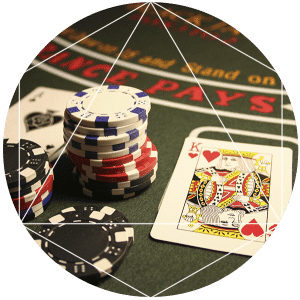
While playing blackjack, as soon as a player is dealt a winning hand, the house pays out immediately. The only time the player will not receive an immediate payout on a blackjack 21 hand is when the dealer’s face-up card is an Ace, or any card worth 10 points.
The reason for this is that if the dealer also holds a blackjack hand, then the round is considered to be a draw or a “push.”
In the case of a push, the player gets his or her bet back, and the game is declared “no action.” Some casinos, though, will boost their advantage by giving the house an automatic win whenever it has a blackjack 21 score, even if the player does, too.
These games are the most unfavorable to the player and should be avoided. That makes it very important to ensure you know the house blackjack rules before you begin gambling.
Blackjack Table Limits
The table limits in blackjack vary from one casino to the next—both in land-based and online gambling casinos. The table limits usually start at a minimum of $5, while online casinos even offer hands of only $1.
Each casino might also have a maximum betting amount, which can range anywhere from $50 to $50,000. Those casino tables are “high-limit” tables that typically have just one or two players going against the house. Most 21 gaming tables accommodate up to six players, but the cost of high-limit tables generally limits the number of players.
Blackjack Insurance
Insurance essentially is a bet on whether or not the dealer has 21 right off of the deal, and requires players to lay half their initial wagers. If the dealer has 21, the house will pay the insurance bets at 2:1. That payoff will wipe out the loss from the initial wager.
If the dealer does have 21, the player will lose the initial bet but will receive a 1:1 payout on their insurance amount, and so they will receive that same amount back. If both have 21, most blackjack rules say that is a push.
Some casino 21 rules, though, give ties to the dealer when it comes to a blackjack. In most cases, though, a push results in the player getting back his or her wager. It’s as if the hand never happened. If the dealer does not have blackjack, anyone who bought insurance will lose that amount, regardless of how the rest of the hand plays out.
Sharpen Your Blackjack Skills at Our Recommended Online Casinos

Planet 7 Casino
Insanely generous bonuses Huge range of free play casino games 400+ slot games on offer

Slots of Vegas
Hefty bonuses for all players Incredibly low wagering requirements No winning caps
Hit Or Stand?
Players also can decline any additional cards with a “stand.”
It is important to note that players have a variety of options to choose from after their first two cards are dealt. The decisions they make should take into account the cards held by other players at the table, as well as the dealer. In most cases, a player normally stands when the point value of their cards is between 16 and 21.
Do Dealers Hit On a Soft 17?
If a dealer has less than 17, they must continue drawing cards until they reach 17 or above, without going over 21. Once the dealer reaches a score of 17 or more, he/she will then stand.
The dealer’s score is then compared to the score of each player. If the scores of the player and the dealer are equal, the player receives their original bet back, and this is a push.
Should the dealer bust or go over 21 at any point, all the players at the table will win and receive a 1:1 payout. Any player who had blackjack would have already been paid out at least 3:2 during the round and as much as 2:1.
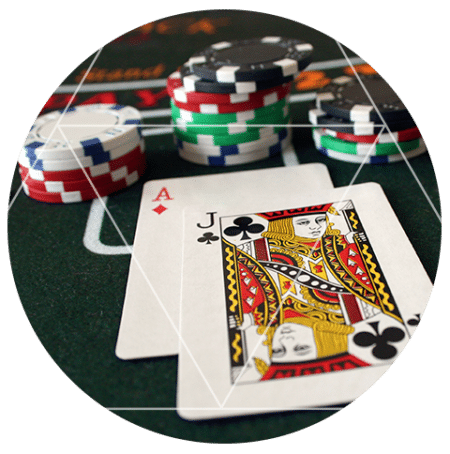
Blackjack Surrender Rules
Depending on the casino, some will let players cut their losses by surrendering half their bets after the initial deal. An early surrender allows the player to surrender when a 10 or face card is drawn without checking the hole card for blackjack.
That could be preferable if the dealer is showing a particularly strong hand, like an Ace. A late surrender allows the player to surrender after checking the hole card, but before the dealer reveals his or her hand. Many players view the early surrender as more favorable, especially if the dealer is showing an Ace.
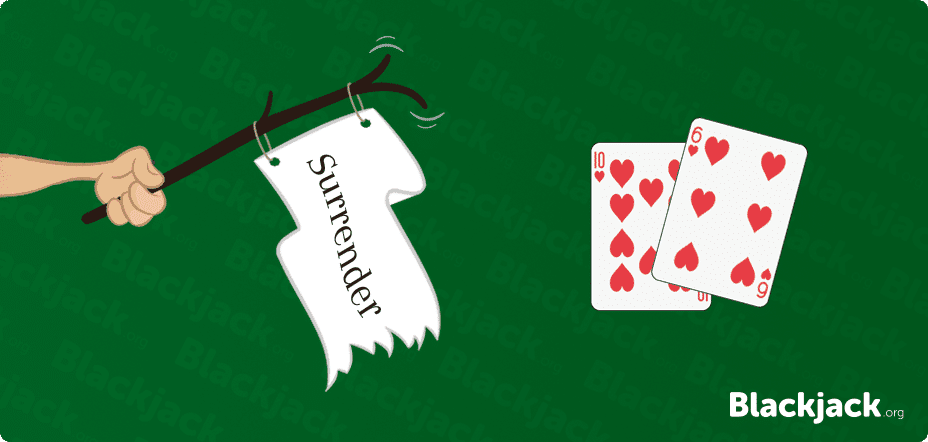
Blackjack Splitting Rules
If the dealer deals you two cards with the same blackjack card value, the rules of blackjack say you may “split” them into two separate hands by placing another bet equal to your initial wager. For example, virtually all players of 21 will split a pair of Aces by placing an additional bet to create two potentially winning hands. After receiving two more cards, the player determines whether to hit or stand with each of the two hands he or she now has.
Sometimes, after splitting the cards on an initial deal, some casinos will allow a “re-split” if the player winds up with another hand with two cards of the same numerical or face value. Depending on the cards dealt, splitting your cards can double your chances of hitting a blackjack.
Splitting cards can also at least double your potential winnings from the same initial hand dealt. Highly skilled players will assess their card values versus the card showing in the dealer’s hand to determine when splitting cards is the wise play. Most will not split a pair of cards worth 20 points, for example, while all will split a pair of Aces.
When To split in blackjack
Blackjack rules say that when your first two cards are identical, you may split them to create two different hands. Knowing when to split your dealt hand is an important element of taking the edge away from the casino and back in your favor. For example, the two hands you ALWAYS split are a pair of aces or a pair of 8’s.
Why you should always split your eights
Having two 8’s in your hand leaves you with the worst position you could be in blackjack: 16, it never has much of a chance to win. But if you do split, you increase your chances of getting two hands of 18.
Many experienced blackjack players are hesitant to split 8s when dealer is showing an 8 or higher. The thought is that if they get two hands of 18, they’re still probably going to lose, so splitting would cause them to lose twice as much.
This makes sense, but, when looking into the analytics over time, it doesn’t hold up mathematically. The math shows that splitting 8s, although it puts twice the wager, will lose less over time.
No matter what, a pair of 8s against a dealer’s 9 or 10 is a bad situation. You’ll lose more than you will win. But the goal in blackjack is to keep your losses to a minimum by choosing the strategy that will lose less than other options.
Here are the numbers
16 against a dealer 10: on average you’ll win only 23 times out of 100, so basically 23% of the time. But when you have a pair of 8s, you have a chance to increase your odds: you can split your 8’s and play each 8 against the 10. Why do this? Because when you play an 8 against a 10, you’ll win this hand more times. 38 times out of 100, which is a 15% higher probability than option one.
Blackjack Double down rules
Another popular play that could double your potential winnings—and losses—on a particular hand is the double down. The double down allows you to double your wager after the initial bet, but you only get one more card. If that one additional card is enough to beat the dealer’s eventual hand, you win double the amount of cash. If it does not beat the dealer’s hand, you could wind up losing double your initial bet.
Many skilled players use a strict system based on statistical probability to determine the ideal times to double down. As with splitting cards, that assessment includes what the dealer is showing off the deal, plus other cards that might already have gone into play. The number of decks used also affects the ideal strategy for playing 21 and considering when to double down on your bet.
Variations of traditional blackjack rules
Many casinos play by the traditional 21 rules that were once popular on the Las Vegas Strip, which is traditionally called American 21 Or Vegas Rules. This is considered one of the more “liberal” blackjack games.
Don’t expect casinos on the Vegas Strip to offer these rules any longer, however, unless you’re playing at high-limit tables. These games are more common online and at small casinos that focus on locals. Yet, the game has many other versions with their own subtle rules changes.
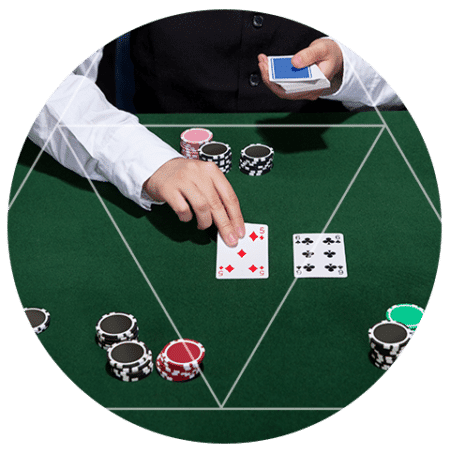
“the reno rule”
An example—” the Reno rule” only allows doubling down on a hard 9, 10, or 11.
European blackjack rules
That is similar to the European variation of only being able to double down on a hard 10 or 11. This rule is not favorable to the player because doubling down with a soft 12-18 is favorable in a lot of situations when playing 21.
No-hole-card blackjack 21
Most countries outside the U.S.—and a few U.S. states—also play no-hole-card blackjack 21, where the dealer initially only gets one card dealt up. That leaves an extra card in the deck for the players to get, and it could be an Ace at just the right time.
“Side Bet”
A “side bet” in blackjack is an optional bet made in addition to the standard play. They are not offered at all tables and are more common online than offline. The only side bet that is standard at just about all tables is insurance.
There are a very wide variety of blackjack side bets. Most of them involve the player being dealt certain initial cards (like a specific pair), the total of the initial deal reaching a certain number, or the dealer busting on their first drawn card.
Side wagers almost universally have a much higher house edge than the game of blackjack itself and are usually not regarded as a good bet for the average player. They can be put to use by skilled card counters in certain situations, however.
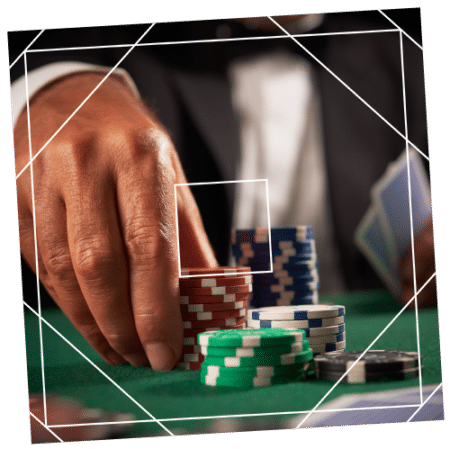
PRO TIP: Learn how to adapt to any type of blackjack rules
No matter which blackjack rules your favorite land-based and online casinos use, you can adapt your game to the rules and stand a better chance of winning more often.
Play and use blackjack basic strategy
Now that you know the basics of 21 card game rules, you can have fun playing online and casino table games for real cash or just for fun. The more you study particular games and learn to apply the basic blackjack 21 strategy, the more you just might find yourself beating the house and winning more cash.
All it takes is some skilled play, combined with a bit of timely luck on your side after you master the blackjack basics.
See? That wasn’t so difficult! If you’re ready for even more awesome blackjack tips or want to get started with some or more intense blackjack strategy, we have all the information and guidance you need!
FAQ
The Most Frequently Asked Questions About How to Play Blackjack
WHERE DO YOU FIND THE BLACKJACK TABLE RULES?
At a live casino, the table limits are usually posted prominently on a sign at the table. The rules may be printed on the table, or you may have to ask the dealer about them. The casino may advertise the number of decks that they use, but they are generally not obligated to do so; you’ll have to either look at the shoe and estimate or ask the dealer.
At an online casino, reputable online blackjack casinos should make the rules available before you enter a table, and there is usually a button you can press to get a refresher if need be (if anything is not constantly visible on the screen). Do not deposit real money into your player’s account until you can verify that the casino’s rules are visible at all times and fair to players.
DO BRICK AND MORTAR CASINOS ALLOW THE USE OF BLACKJACK STRATEGY CARDS?
At brick and mortar, policy varies from property to property, but it is very common for casinos to allow players to use strategy cards. Some even sell them in their gift shops! Some properties may not want it placed on the table, however (as part of a general policy of not allowing anything on the table). Some may also ask players to put it away if other players feel it is slowing down the game too much.
If you aren’t sure of the house policy, simply ask the dealer before sitting down.
HOW DOES BLACKJACK DIFFER FROM “21” GAMES LIKE SPANISH 21 AND PONTOON?
“21” games and exotic blackjack variants usually have all sorts of unusual rules, some of which are much more favorable to the player. However, they also tend to make up for this with very poor payout rates for natural blackjacks, and also may give the dealer the win with certain types of pushes.
If you sit down and do the math, 21 variants and oddball blackjack games usually end up having a more unfavorable house edge than standard blackjack, even though the rules might seem more liberal at first.
WHAT ARE THE MOST LIBERAL BLACKJACK RULES YOU CAN FIND?
The common blackjack rules that actually tilt the game in the player’s favor (assuming perfect strategy is used) are as follows:
- Single deck or two decks used
- Early or late surrender allowed
- Unlimited doubling allowed
- Players can re-split aces and draw to them
- Player wins automatically if they draw six cards without busting
If all these rules were included, collectively they would provide the player with about a 1% advantage on the dealer. Of course, when casinos include these rules, they’ll also include less favorable rules in the mix to offset them and preserve their house edge.
The most favorable possible table you’ll be able to find in reality is a single deck game that pays 3:2 on blackjacks and early surrender allowed, but expect high table limits in return for the lowered house edge.
DO BLACKJACK PAYOUT AMOUNTS REALLY MAKE A BIG DIFFERENCE?
Yes, they make a huge difference. Changing the blackjack payout to 6:5 alone provides the casino with a 1.39% boost to their house edge. That’s why it is used to offset the player’s advantage at so-called “liberal” games. No rule change at blackjack gives the house more of an advantage other than allowing the dealer to win pushes.
WHAT DIFFERENCE DOES THE NUMBER OF DECKS MAKE IN BLACKJACK?
To the average blackjack player who is not counting cards, it makes very little difference in terms of expected return and house edge. Card counters want as few decks as possible to simplify their counts, however.
WHAT IS CARD BURNING IN BLACKJACK?
Some blackjack tables have a practice of discarding the first card from each new shoe before beginning play. Rules about seeing this card vary from place to place, sometimes even from dealer to dealer.
Some show it to the table automatically, some have to be asked, and (rarely) some casinos have a policy of never showing it to the player.
Card counters would, of course, prefer to see the burn card, but generally don’t regard it as a big deal if they can’t, as there are usually some quantity of cards behind the cut card that they will never get to see anyway.
This practice actually wasn’t designed to deter card counting. It was actually designed to prevent an unethical trick called “card steering.”
It prevents players (or shady dealers) from marking the top card, or from accidental exposure to players prior to the deal. If the casino wants to burn cards to deter card counting, they would periodically burn several cards in the middle of the shoe to more effectively mess with player counts.

